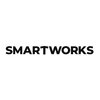
i
Nyati Group
Filter interviews by
Nyati Group Planning Engineer Interview Questions and Answers for Experienced
Nyati Group Planning Engineer Interview Experiences for Experienced
1 interview found
(1 Question)
- Q1. Procedure for building construction
- Ans.
The procedure for building construction involves several steps and processes.
Developing a project plan and obtaining necessary permits
Clearing the construction site and preparing the foundation
Constructing the structural framework and installing utilities
Completing interior and exterior finishes
Conducting inspections and obtaining certificates of occupancy
Handing over the completed building to the owner
Planning Engineer Jobs at Nyati Group
Top trending discussions






Interview questions from similar companies

I applied via Naukri.com and was interviewed in Jan 2021. There were 3 interview rounds.
Interview Questionnaire
3 Questions
- Q1. Primavera Schedule preparation
- Q2. Cost review techniques
- Ans.
Cost review techniques are used to evaluate and analyze project costs.
Cost-benefit analysis
Earned value management
Variance analysis
Life cycle costing
Activity-based costing
- Q3. Time delay analysis
Interview Preparation Tips
Earned value analysis
Planning basics

I applied via Referral and was interviewed in Jul 2023. There were 2 interview rounds.

(2 Questions)
- Q1. About yourself and work experience related
- Q2. About MTECH thesis

I applied via Referral and was interviewed in Aug 2022. There were 3 interview rounds.

(6 Questions)
- Q1. Aluminium Formwork activity brief description.
- Ans.
Aluminium formwork is a construction technique that uses lightweight aluminium panels to form concrete walls, floors, and columns.
Aluminium formwork is a modern construction technique that is faster and more efficient than traditional formwork methods.
It involves using lightweight aluminium panels that are easy to handle and can be reused multiple times.
The panels are assembled on site to form the desired shape and siz...
- Q2. Waterproofing Procedure
- Ans.
Waterproofing procedure involves applying a waterproof barrier to prevent water from penetrating a building structure.
Identify the areas that need waterproofing such as roofs, walls, and foundations.
Choose the appropriate waterproofing material based on the type of structure and the level of water exposure.
Prepare the surface by cleaning and repairing any cracks or damage.
Apply the waterproofing material using the reco...
- Q3. External Development area step by step activities
- Q4. What is Steel Fibre Road Concrete?
- Ans.
Steel Fibre Road Concrete is a type of concrete that contains steel fibres to improve its strength and durability.
Steel fibres are added to the concrete mix to enhance its mechanical properties.
The fibres act as reinforcement and help to prevent cracking and improve resistance to wear and tear.
Steel Fibre Road Concrete is commonly used in the construction of roads, bridges, and other infrastructure projects.
It is also ...
- Q5. Piling works what i had done
- Ans.
I have experience in piling works including design, installation, and testing of piles.
Designed pile foundations for various structures including bridges and buildings
Installed piles using various methods such as driven piles and drilled shafts
Conducted pile load tests to ensure the capacity of the piles
Managed and supervised piling works on construction sites
Ensured compliance with safety regulations and quality stand
- Q6. Concrete technology for site activity
- Ans.
Concrete technology is crucial for site activity as it involves the proper mixing, placing, and curing of concrete.
Understanding the properties of concrete and how it reacts to different conditions
Proper mixing of concrete ingredients to achieve the desired strength and consistency
Ensuring proper placement and compaction of concrete to avoid voids and weak spots
Proper curing of concrete to achieve maximum strength and ...
(2 Questions)
- Q1. Why i want to leave the current company
- Q2. What is my expectation for their organisation
Interview Preparation Tips

Interview Questionnaire
2 Questions
- Q1. What projects i had done in Bachelors?
- Ans.
I completed various projects during my Bachelor's degree, including a design project for a new bridge and a research project on renewable energy.
Designed a new bridge using CAD software
Researched and implemented renewable energy sources on campus
Collaborated with classmates on a group project to improve campus sustainability
- Q2. Where i did my 6 months internship?
- Ans.
I completed my 6 months internship at ABC Engineering Firm, where I gained hands-on experience in project management and design.
Internship at ABC Engineering Firm
Focused on project management and design
Hands-on experience gained
Interview Preparation Tips
Experience: I was fresher, so they usually ask me about my university projects and my final training.
Tips: It will be good if you relate your projects with the company profile.

Interview Questionnaire
2 Questions
- Q1. Location
- Q2. Salary

I applied via Recruitment Consulltant and was interviewed in Mar 2023. There were 2 interview rounds.

(2 Questions)
- Q1. Working experience
- Q2. Present location of work
- Ans.
I am currently working at a construction site in downtown city.
Construction site in downtown city
Working on a high-rise building project
Coordinating with architects, contractors, and workers
Ensuring adherence to safety regulations and project timelines
Interview Preparation Tips

I applied via Company Website and was interviewed before Jan 2023. There was 1 interview round.
(5 Questions)
- Q1. Chiller efficiency
- Ans.
Chiller efficiency is a measure of how well a chiller unit is able to cool a space while using the least amount of energy.
Chiller efficiency is typically measured by the Coefficient of Performance (COP), which is the ratio of cooling output to energy input.
Regular maintenance and cleaning of chiller components can improve efficiency.
Upgrading to a more energy-efficient chiller model can also increase efficiency.
Proper ...
- Q2. Which one more efficiently? Air cooled,or water cooled???
- Ans.
Water cooled systems are generally more efficient than air cooled systems due to higher heat transfer capabilities.
Water has higher heat transfer capabilities compared to air
Water cooled systems can maintain more consistent temperatures
Water cooled systems are typically used in high performance applications such as data centers and industrial machinery
- Q3. How we improved duct velocity?
- Ans.
Duct velocity can be improved by increasing the fan speed or reducing the duct size.
Increase the fan speed to increase the air velocity in the duct.
Reduce the duct size to increase the air velocity.
Use dampers or adjustable louvers to control and optimize the airflow.
Ensure proper sealing of duct joints to minimize air leakage.
Consider using smooth and straight ducts to reduce friction and improve airflow.
Regularly cle...
- Q4. What types of gas use chiller system?
- Ans.
The chiller system uses various types of gases for cooling purposes.
Common types of gases used in chiller systems include R-134a, R-410A, and ammonia.
R-134a is a hydrofluorocarbon (HFC) refrigerant commonly used in air conditioning systems.
R-410A is a blend of hydrofluorocarbons used as a replacement for older refrigerants.
Ammonia (NH3) is often used in industrial chiller systems due to its high cooling capacity.
Other ...
- Q5. How we decided the vrf system capacity as per area??
- Ans.
The VRF system capacity is determined based on the area's cooling and heating load requirements.
Calculate the total cooling load and heating load for the area
Consider factors such as insulation, windows, occupancy, and equipment
Select VRF system capacity based on the calculated load requirements
Consult with HVAC professionals for accurate sizing
Interview Preparation Tips

I applied via Naukri.com and was interviewed in May 2023. There were 3 interview rounds.

(2 Questions)
- Q1. Diffirence between project and project engineering
- Ans.
Project refers to a specific task with a defined start and end, while project engineering involves the technical aspects of planning, designing, and executing the project.
Project is the overall task or objective to be completed within a specific timeframe.
Project engineering focuses on the technical aspects such as planning, designing, and executing the project.
Project management involves coordinating resources and tas...
- Q2. Types of services in interior fitout
- Ans.
Types of services in interior fitout include design, construction, project management, and installation.
Design services involve creating layouts, selecting materials, and creating 3D visualizations.
Construction services include building partitions, ceilings, and flooring.
Project management services involve coordinating schedules, budgets, and contractors.
Installation services include fitting furniture, fixtures, and eq...
(2 Questions)
- Q1. Problems faced in site
- Ans.
Some common problems faced on site include delays in material delivery, inclement weather, and coordination issues.
Delays in material delivery can impact project timelines and budgets
Inclement weather can halt work progress and cause safety concerns
Coordination issues between different teams can lead to misunderstandings and errors
- Q2. Difference between agreement and bond
- Ans.
Agreement is a mutual understanding between parties, while a bond is a legal document that ensures fulfillment of obligations.
Agreement is a mutual understanding between two or more parties.
A bond is a legal document that guarantees the fulfillment of obligations.
Agreements are usually informal and may not always be legally binding.
Bonds are formal and legally enforceable documents.
Examples of agreements include contra...

(2 Questions)
- Q1. Low tension cable rating 440v
- Ans.
Low tension cables rated for 440V are commonly used for power distribution in residential and commercial buildings.
Low tension cables are typically rated for voltages up to 1000V.
These cables are commonly used for power distribution in buildings.
Examples of low tension cables include PVC insulated cables and XLPE insulated cables.
- Q2. 11kv cable strenght and voltage
Nyati Group Interview FAQs
Tell us how to improve this page.
Nyati Group Interviews By Designations
- Nyati Group Junior Engineer Interview Questions
- Nyati Group Safety Officer Interview Questions
- Nyati Group Junior Engineer Civil Interview Questions
- Nyati Group Senior Estimation Engineer Interview Questions
- Nyati Group Project Manager Interview Questions
- Nyati Group Senior Engineer Interview Questions
- Nyati Group Asst Store Interview Questions
- Nyati Group Quality Engineer Interview Questions
- Show more
Interview Questions for Popular Designations
- Planning Manager Interview Questions
- Senior Planning Engineer Interview Questions
- Assistant Manager Planning Interview Questions
- Planning & Billing Engineer Interview Questions
- Project Planning Engineer Interview Questions
- Lead Planning Engineer Interview Questions
- Senior Manager Planning Interview Questions
- Junior Planning Engineer Interview Questions
- Show more
Nyati Group Planning Engineer Interview Process for Experienced
based on 1 interview
Interview experience
Interview Questions from Similar Companies
Nyati Group Planning Engineer Reviews and Ratings
based on 2 reviews
Rating in categories
|
Junior Engineer
161
salaries
| ₹2 L/yr - ₹5.4 L/yr |
|
Senior Engineer
96
salaries
| ₹3.8 L/yr - ₹10.5 L/yr |
|
Junior Engineer Civil
75
salaries
| ₹2 L/yr - ₹5.4 L/yr |
|
Civil Engineer
34
salaries
| ₹2.7 L/yr - ₹6.4 L/yr |
|
Safety Officer
34
salaries
| ₹2.5 L/yr - ₹7.6 L/yr |

Knight Frank

R.S. Infraprojects

SMEC

BPTP
- Home >
- Interviews >
- Nyati Group Interview Questions >
- Nyati Group Planning Engineer Interview Questions for Experienced










